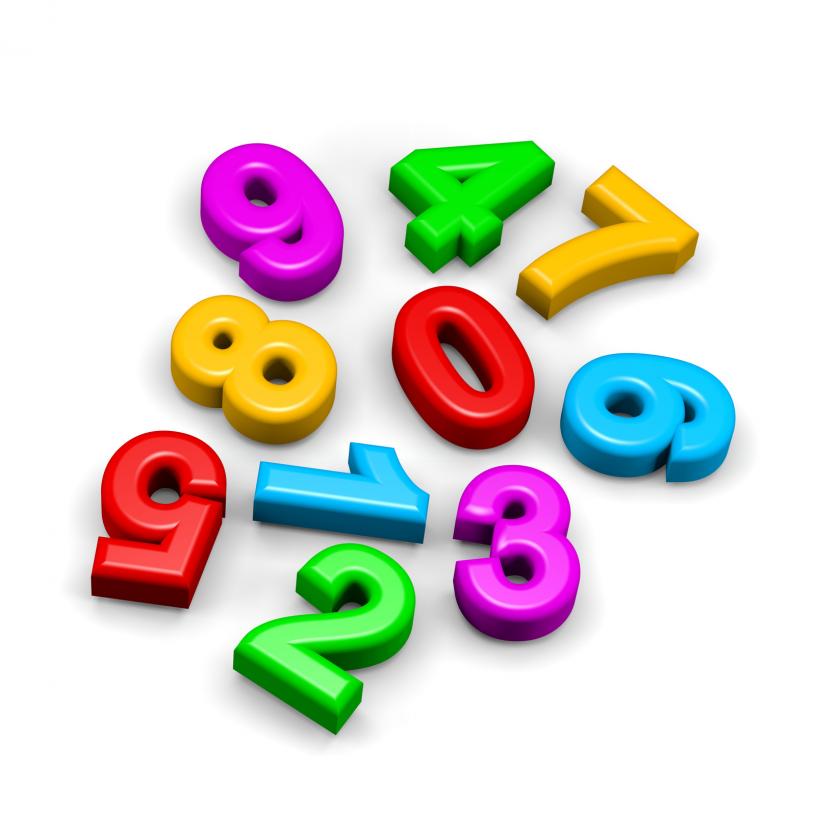Uno-Due-Tre: Italian Numbers You Can Learn
 Readers of our previous posts on German and Spanish numbers know that we are big fans of at least learning the numbers in the language of the country we want to visit.
Readers of our previous posts on German and Spanish numbers know that we are big fans of at least learning the numbers in the language of the country we want to visit.
To prepare for a five-month stay in Rome, Italy, we spent a several months learning Italian. As this was several years ago and online programs were not yet readily available, we just used CD's. Neither of us had the time nor the patience to work through a textbook.
Once we arrived in Italy, it was clearly helpful to know basic phrases and be able to ask simple questions. In addition, knowing the numbers proved to be essential.
As a matter of fact, numbers were everywhere. We heard and said them when shopping, when paying a bill, or buying tickets; when arranging a time to meet someone, making a restaurant reservation, or asking about bus or train schedules; when hearing or asking about historical dates, or simply chatting with locals about travels in the past. We were using Italian numbers often during the day and felt pretty good that we had learned them.
Italian pronunciation is quite different from English, so you really have to practice saying the numbers out loud. The good news is that Italian is largely phonetic, which means that letters or letter groups are nearly always pronounced the same way.
Italian Numbers 1-20
With a couple of exceptions, Italian numbers from 1-10 resemble those in English, and are not hard to learn.
Sometimes seeing them written out helps: "uno" (one), "due" (two), "tre" (three), "quattro" (four), "cinque" (five), "sei" (six), "sette" (seven), "otto" (eight), "nove" (nine), "dieci" (ten). Not to forget that Italian "zero" is "zero."
For the numbers 11 to 16, you combine a mostly shortened form of numbers 1 to 6, with the ending "-dici":
"undici" (eleven), "dodici" (twelve), "tredici" (thirteen), "quattordici" (fourteen), "quindici" (fifteen), "sedici" (sixteen).
Notice the exception: "quindici" (15), where "cinque" (5) becomes "quin-."
For the numbers 17, 18, and 19, the pattern is turned around. You begin with "dici-" and with 17 and 19, you add connecting letter. 
- for 17, you add "-as-" to say: "diciassette";
- for 18, you say: "diciotto";
- for 19, you add "-an-" to say: "diciannove."
The Italian number 20 is "venti."
Once you've memorized the numbers 1 to 20, you've got a good basis for the numbers that follow. And practicing is easy, if you just Play Italian Numbers 1-20
Counting by Tens: 30, 40, 50, etc.
The round numbers 30 to 90 are for the most part delightfully regular. The number 30 is "trenta," but starting with 40, the tens all have the ending "-anta":
- "quaranta" (40),
- "cinquanta" (50),
- "sessanta" (60),
- "settanta" (70),
- "ottanta" (80),
- "novanta" (90).
Italian Numbers 21-99
The other numbers from 21 to 99 should not be too difficult either. (If you know French, you'll probably agree with me.) The Italian numbers are combined as in English: for example,
- "ventidue" (twenty-two),
- "trentasette" (thirty-seven),
- "quarantasei" (fourty-six),
- "cinquantatré" (fifty-three) etc.
Note that in these combined numbers, "three" is written as "-tré", with an acute accent.
Also, all numbers are said, and written out as one word, without a hyphen.
One thing to remember is that in these numbers, you drop the middle "-i" or "-a" when the second number is "-uno" (one) or "-otto" (eight).
So, you say "ventuno" (21) and "ventotto" (28), in contrast to "venticinque" (25), and "ventinove" (29), etc.
You do this consistently right through 99: "novantuno" (91) and "novantotto" (98) as opposed to "novantatré" (93) and "novantanove," (99), etc.
The Hundreds from 100-900
The Italian number 100 is "cento." Multiples of a hundred, simply combine the number 2 to 9 with "-cento." So you have:
- "duecento" (200);
- "trecento" (300);
- "quattrocento" (400);
- "cinquecento" (500);
- "seicento" (600);
- "settecento" (700);
- "ottocento" (800);
- "novecento" (900).
And practicing is easy: Just play the Italian Quick Game - Numbers 21 and Beyond
Italian Numbers from 101 to 999
The number 101 is simply combined: "centouno," as are all the other numbers to 999. When written out, these numbers are one word. Here are various number combinations:
- "duecentotré" (203),
- "trecentonovantotto" (398),
- "quattrocentoventuno" (421),
- "cinquecentoventicinque" (525),
- "seicentoottantasette" (687),
- "settecentouno" (701),
- "ottocentosessantanove" (869),
- "novecentocinquantasei" (956).
Italian numbers from 1000 to 10,000
Note that a thousand (1000) is "mille," but a multiple of thousand uses the suffix "-mila":
- 2000 is "duemila";
- 5000 is "cinquemila";
- 8000 is "ottomila";
- 10,000 is "diecimila."
Not to forget that Italian uses a period, where US English uses a comma; and conversely, a comma for the US English decimal point. So, in Italy, ten thousand is 10.000 (with a period).
On the other hand, for the US English decimal point, as in 10,450.10 - Italian uses a comma. The number is written in Italian as 10.450,10 - which can indeed be a little confusing.
 Italian Historical Dates
Italian Historical Dates
Historical dates, of course, are rarely written out. But there are conventions on how to say them.
In Italian, unlike in English, you use "thousands" (not hundreds) to say a specific year between 1101 and 1999. Note also, that Italian written numbers can get very long because they are written (and said) as one word.
So, 1829 - should it be written out - would be "milleottocentoventinove."
MILLIONS, BILLIONS, TRILLIONS
A point of frequent confusion for speakers of American English are the high numbers that are often quoted in news reports about global finances, as for example, in the recent negotiations between Greece and the European Union regarding Greece's financial obligations.
Italian and English agree on "one million" (1,000,000) - "un milione."
(Note that "two million" is "due milioni," for plural agreement.)
But, for the US English "one billion" (1,000,000,000), Italian uses "un miliardo".
And the US English "trillion" (1,000,000,000,000) is the Italian "bilione."
Some misunderstandings are bound to come up here.
Finding Opportunities
We've found that there are many opportunities every day to really learn and internalize Italian numbers: Practicing them when exercising (e.g. counting numbers of repetitions), while waiting (e.g. counting passing cars or people), or even "counting sheep" before falling asleep.
And, just perhaps, the last suggestion may even have you "learn during your sleep." While not quite the same, recent experiments by seem to indicate that foreign words heard during nonREM sleep may be recalled better later on. We looked into this research later on in Foreign Language Learning While You Sleep?
Bio: Ulrike Rettig is the co-founder of Gamesforlanguage.com. She is a lifelong language learner, growing up in Austria, the Netherlands, and Canada. You can follow her on Facebook, Twitter and Instagram, and leave any comments with contact.
